The three men pause in front of the Kate Frey Pollinator Garden at the Sonoma Cornerstone and begin to read the sign.
"The Pollinator Garden by Kate Frey," one man reads out loud. "It's brand new, come back soon and watch as it grows. This flower-filled and colorful garden is a pollinator garden. All the plants offer food resources of pollen and nectar for pollinators such as native bees, honey bees, butterflies, hummingbirds and beneficial insects. Pollen is a protein, mineral and fat source and is primarily a larval food for bees, while nectar is composed of various sugars and is the main food for pollination and the adult life stage of many beneficial insects."
They watch the bees, butterflies and hummingbirds--buzzing, fluttering and swooshing--in a rush of colors.
"Beautiful garden," one says.
"Do you want to see a praying mantis?" I ask.
I had earlier spotted a mantis in the vegetation--a female Mantis religiosa (species identified by praying mantis expert Lohit Garikipati, a UC Davis entomology student who rears mantids).
Californians commonly see native mantids, Stagmomantis limbata and Stagmomantis californica, as well as this introduced one, M. religiosa.
"I don't see it," one of the men says. "Where is it?"
"There," I point. "Camouflaged."
"You have a good eye," he comments. "Wow, I haven't seen a praying mantis since I was a kid." He whips out his cell phone for a quick image.
The praying mantis made his day.
It's always a good day when you encounter a praying mantis.
Kate Frey, a resident of Hopland, is the author of the award-winning book, The Bee Friendly Garden, with Professor Gretchen LeBuhn of San Francisco State University, a book that details how to design an abundant, flower-filled garden that nurtures bees and supports biodiversity. She's a two-time gold medal winner at the Chelsea Flower Show and co-founder of The American Garden School. (Read this Bug Squad post to learn her favorite plants and how to attract pollinators.)
As Frey told the crowd at the 2018 UC Davis Bee Symposium, hosted last March by the UC Davis Honey and Pollination Center and the UC Davis Department of Entomology and Nematology: "Whether you plant them, nurture them, or walk through them, bee gardens make us happy."
They do, indeed. Praying mantids do, too.
Attached Images:
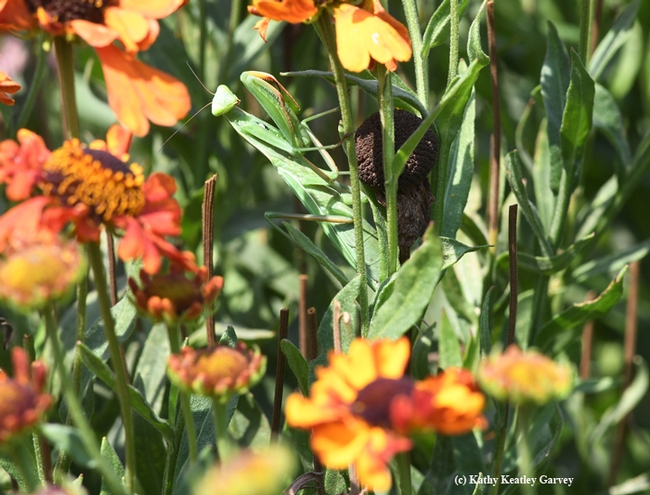
A female praying mantis, Mantis religiosa (as identified by praying mantis expert and UC Davis student Lohit Garikipati) is camouflaged in the Kate Frey Pollinator Garden, Sonoma Cornerstone. (Photo by Kathy Keatley Garvey)
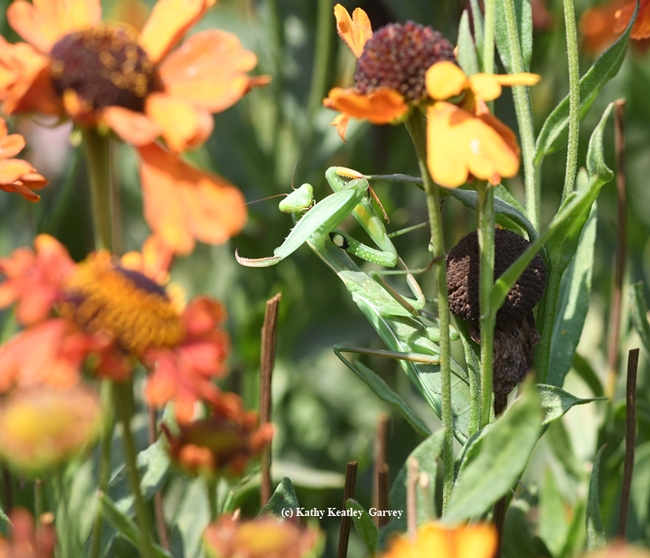
"Whoa! No pictures!" The female mantis raises her spiked leg. (Photo by Kathy Keatley Garvey)
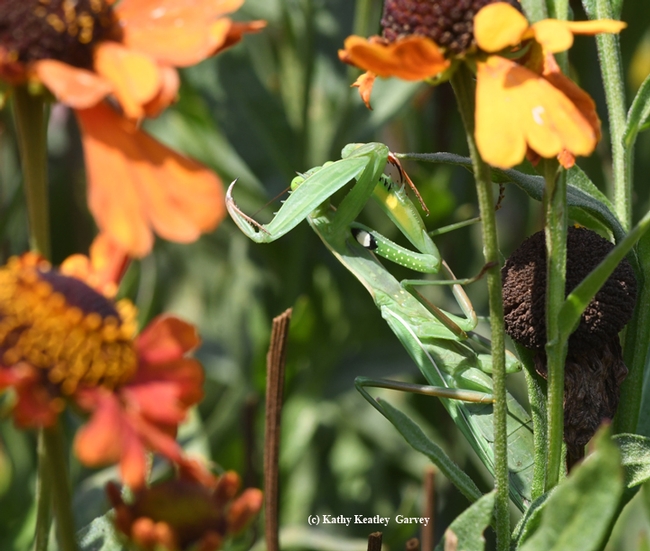
"I said no pictures!" The mantis covers her head with a spiked foreleg. (Photo by Kathy Keatley Garvey)
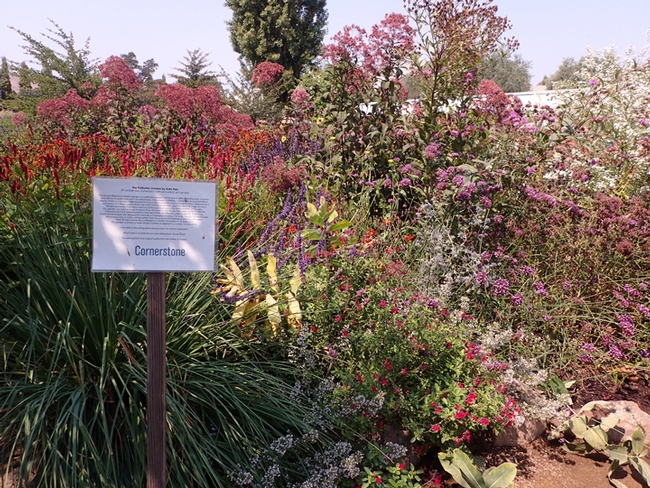
A sign informs visitors what the Kate Frey Pollinator Garden at Sonoma Cornerstone is all about. (Photo by Kathy Keatley Garvey)
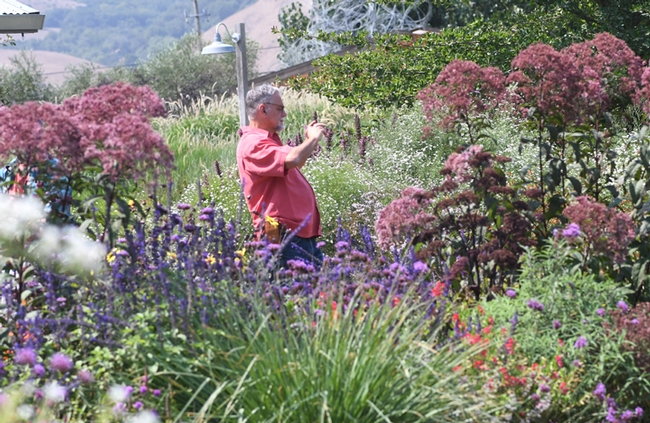
A visitor takes images of the Kate Frey Pollinator Garden, Sonoma Cornerstone. (Photo by Kathy Keatley Garvey)